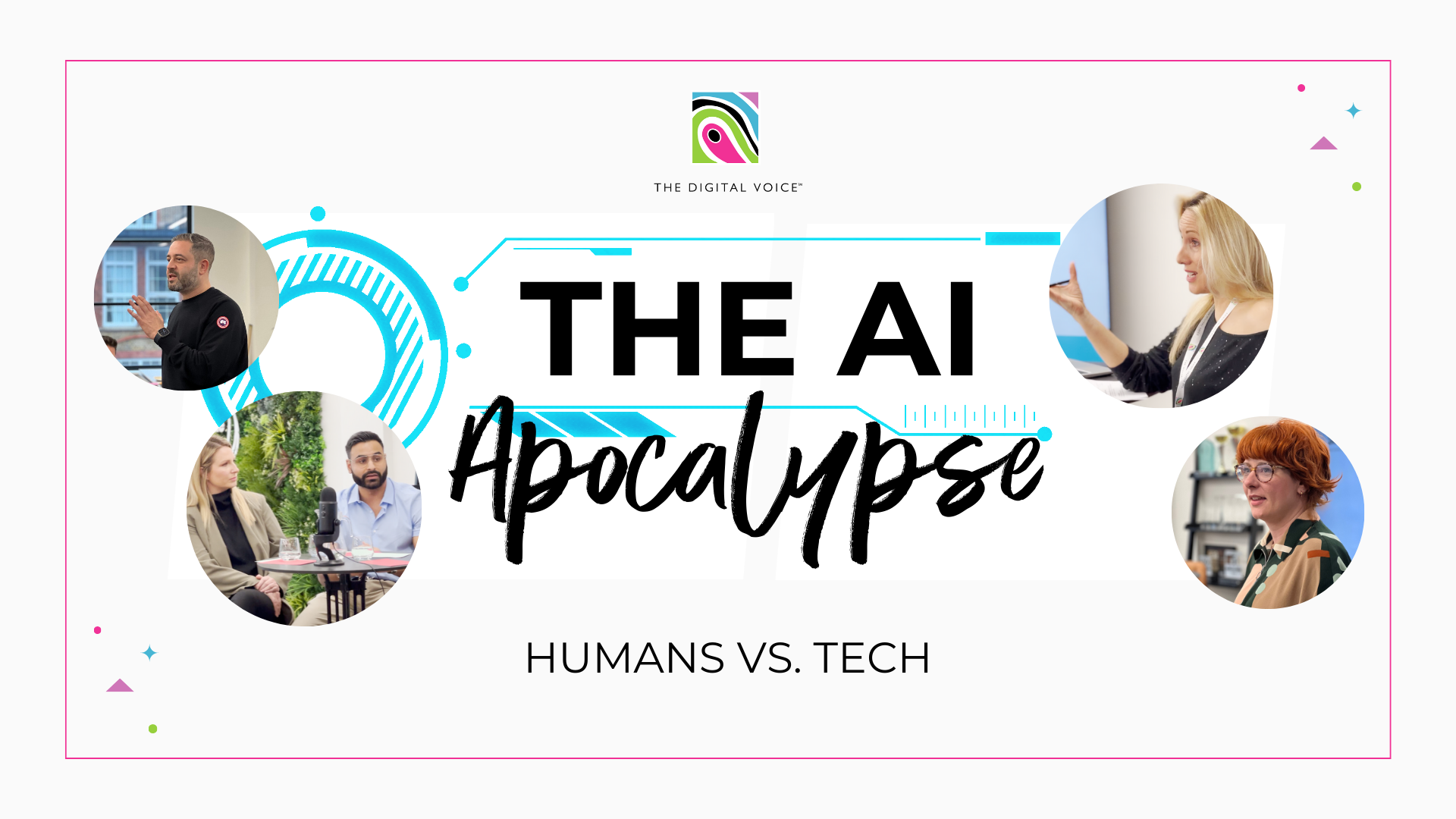
Few things divide our opinions these days quite like AI. At our recent Humans vs. Tech event hosted in conjunction with Sphere Digital Recruitment, the day was split between speakers and panels discussing what automation can do for the industry, what it’s better at than humans, and where we should put our collective foot down. The bottom line was simple: there’s a lot to be excited about, but we need to use AI correctly and educate it well for it to work in our favour.
For decades, artificial intelligence has been a topic of fascination and it’s finally stepping off the Sci-Fi silver screen into our everyday lives – from everyday integrations like Siri and Alexa to self-driving cars, personalised healthcare, and advanced robotics, the possibilities seem endless. But as the tech advances at alarming speeds, its unchecked development brings with it a new set of ethical questions that society must grapple with – from privacy to morality, copyright to existential dread, do the benefits of AI really outweigh the concerns?
I’m going to be bold and say Yes with a capital Y – and I’ve been a lifelong technology sceptic. My thoughts on the rise of machines can be summed up in this one
Calvin and Hobbes comic strip from 1995:

It comes down to one simple factor: we can’t rely on the tech to do everything. When it comes down to it, AI can’t fully replace the “Human Factor” in creativity. I set about writing this article with the intention of letting ChatGPT write every other paragraph and only asking at the end if you could tell which sections were AI-generated, but when I started with the opening paragraph it quickly turned disastrous. The writing style was oddly uncanny – it read a little like a plagiarised school essay – and according to ChatGPT, the risks of AI are a full-on robot apocalypse (should we be nervous that the AI itself is suggesting that?)
So I generated a few introductory paragraphs, took inspiration from the parts I liked, cut the rest, and wrote it myself.
And as it turns out, that’s exactly how we should be using AI. In three simple steps, we can turn AI technology into an endless resource.
Step One: Humans inform AI – so inform it right
All that data mining that allows software like ChatGPT to create something out of nothing works by observing, analysing, and copying human creativity and speech patterns. As Exit Bee’s Victoria Pindar pointed out at
Humans vs. Tech, “technology like ChatGPT can make things scalable, but it's all pulled from human experience.” It learns from pre-existing outputs and collected data. Artificial intelligence cannot mimic humanity on its own, because AI needs to be fed information on how to act.
And if we educate it well, AI has limitless potential. But there’s also a significant responsibility involved on the part of the developers to ensure AI like ChatGPT is learning from the right sources to better understand the nuances of humanity – for example, if you were to ask ChatGPT for a political opinion, it’d draw the answer from dozens of human opinions shared across the internet, collating them into something new. That’s perfectly fine as long as those opinions are varied to the point of being unbiased, but add a little partisanship into how the AI has been taught and suddenly some unsuspecting ChatGPT user is posting prejudiced views out into the world in their AI-generated social captions. There’s something to be said about society if that outcome were to happen – AI is like a mirror, reflecting back at us what we put out into the world. If the outputs are controversial, it’s our own fault, and we could all use some reflection to look at ourselves and how we present ourselves online.
But even if machine learning is picking up some of humanity’s less savoury habits, we still have a safety net with steps two and three.
Step Two:
Let AI take on the workload
Remember the comic strip above? For the last thirty-odd years, every development in technology has sped up our lives. Everything you could ask for is at the click of a button, and so the demand for instant gratification is through the roof. For the first time since the tech revolution began in the ‘90s, something is buying us back our freedom, and that’s AI. A little AI support can release you from that blank page syndrome that keeps you from starting a project. It can cut down the number of steps to a finished product by doing some of the legwork for you and thinking outside the box of human logic. Taking inspiration from an AI response is no different to spending hours researching from other people’s work, it simply cuts down the time spent and reduces the chances of accidental plagiarism. AI is there to assist us, not to replace us.
And AI assistance isn’t just about creativity, but also data analysis and countless other factors. GumGum’s Rob Garber talked at
Humans vs. Tech
about their platform Verity, which scans content on web pages like a human would. Pitting the event audience against the machine in choosing where to run particular ads to reach the right people, Rob proved that human opinion was polarising and varied, and the data-backed reality was different to the majority vote every time. As individuals, we’re informed by our own experiences, creating bias behind our logic no matter how hard we try. Verity is informed by global data, producing an unbiased analysis of where a reader’s attention would land based on machine learning.
Rob went on to point out that everyone is going to be using AI in the future to some degree, whether we like it or not. “You need to let machines take over for them to do their work to the best of their ability.” And at the end of the day, it’s what we do with the AI outputs that really matters.
Step Three: Bring it back to Human Touch
At least in terms of content creation, it is rare that we should accept an AI output as a finished piece. “I think ChatGPT is going to give us more of a birds-eye view,” says SeenThis’ Charlotte Ashton. “You’ll still need to tailor it, but it might give you a template. A human touch will always be needed.”
Let’s face it – AI can produce some really odd or bland content. It’s bound to happen when AI is learning from so many sources, because – at least for the time being – any personality behind the machines is just mimicry of the real thing. To make it work for us, we need to treat AI creations as a base to build off, not a replacement for human brilliance.
Amy Wright, Head of Strategy at AI-driven advertising agency Automated Creative, wants to see partnership between humans and tech, not rivalry. “Humans paired with machines is what creates the best results. AI on its own does not produce good quality content – the technology should be the starting point, not the endpoint.”
When it comes to creative outputs, that’s the final line. Humans and machines are a dynamic duo, as long as we allow it. We could waste a lot of time arguing against the use of AI, but that would do little more than slow the tide of its inevitable use – I say have a little more faith in humanity. It’s a wild west out there right now, but AI will never replace human creativity for good. In fact, it’s bound to make us value it even more.
Watch the highlights of our Humans vs. Tech event below or the full panels on Youtube!

Ren Bowman is Senior Marketing and Multimedia Producer at The Digital Voice™, a first-class graduate in Creative Writing and an award-winning podcast producer. They’ve written for a range of industries including tech, entertainment, education, business finance, and lifestyle. Outside of work, they are an activist for social justice, especially Women’s and LGBTQ+ rights.



